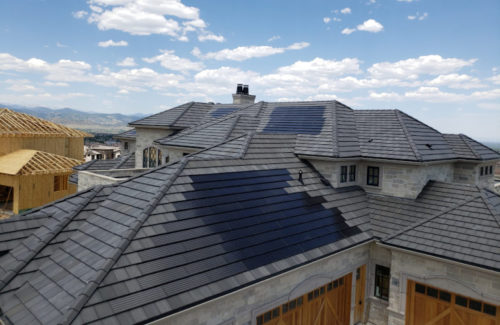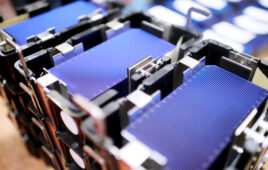Solar roof shingle maker SunTegra announced it has started production of its solar shingle products at a new facility in Binghamton, New York. The facility will be used for main office supporting administration, sales, R&D, and to ramp up production to meet increasing demand.
 “We are delighted to be moving our business to the Binghamton area,” said CEO Oliver Koehler. “Binghamton offers access to great technical expertise, has talented labor and features a robust network of regional suppliers. We see Binghamton as a great platform from which to grow our business nationally.”
“We are delighted to be moving our business to the Binghamton area,” said CEO Oliver Koehler. “Binghamton offers access to great technical expertise, has talented labor and features a robust network of regional suppliers. We see Binghamton as a great platform from which to grow our business nationally.”
Originally based in Highland, New York, SunTegra was a winner of the 2017 76West Clean Energy Competition, which is how the company initially learned of the resources Binghamton offered. In that year, SunTegra joined the Koffman Southern Tier Incubator, gaining mentorship and guidance from subject matter experts.
The development of SunTegra solar shingles and solar tiles predate the Tesla solar roof products, and this move to Binghamton should allow for an expansion of products into 2022.
The SunTegra Shingle is rated at 114 W and the SunTegra Tile is 70 W. Both use monocrystalline silicon solar cells and attach to the roof decking without traditional solar racking.





“The SunTegra Shingle is rated at 114 W and the SunTegra Tile is 70 W. Both use monocrystalline silicon solar cells and attach to the roof decking without traditional solar racking.”
This is not the best way to have a solar PV roof. Tight racking with standoffs and standard solar PV panels is still the best way. Folks drive down their streets and there are power poles every 50 to 100 feet, there are street lights installed every so often and it has become ubiquitous, just something we ‘endure’ as part of the landscape. Let’s face it , this “insistence” of solar PV roof tiles is over the top. IF folks were (really) concerned about the “blight” of power poles along the streets, they would have banned together to underground the power lines in their respective housing tracts at about $1 million dollars a mile of undergrounded cable. TESLA ‘claims’ the snap together design of their tiles takes care of past problems of the number of actual wire piercings through the roof. Yet, I would imagine in the solar PV tiles, you would have partial cuts to tile runs and still require more piercings in the roof to get the wiring in the attic so one can make series/parallel circuits to feed the house inverter(s). I can’t see troubleshooting and repair of such a system would be as easy as a solar PV panel with a converter or micro-inverter installed under each panel. Just sayin’.